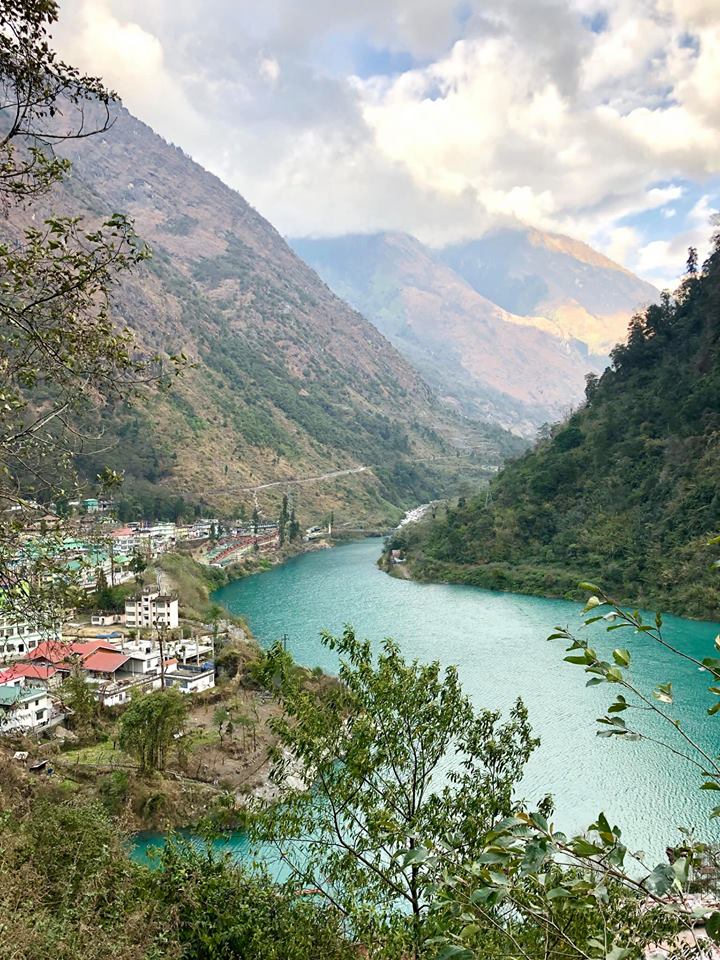
Pelling, Namchi, Rabangla, Gangtok, Chungthang,
This album contains: –
1) Chardham of Namchi in South Sikkim and Guru Padmasambhava Dham
2) Buddha Park in Rabangla, South Sikkim
3) Singshore Bridge of West Sikkim Pelling, Khechiperi Lake, Sky Work, Kanchenjunga Falls, Sangacholing Monastery (the oldest monastery in Sikkim)
4) Chungthang in North Sikkim
5) Gangtok MG Marg Mall Road
## Where to get Inner Line Permit (ILP) to Gangtok 🙁 for foreigners) …
You can get Inner Line Permit (ILP) to Gangtok from Dhaka Jamuna Future Park (IVACBD) or from Siliguri SNT-Sikkim Nationalized Transport or from Rangpo checkpoint to enter Sikkim. It is most convenient to take from Rango. If you enter, you will get permission within 10 minutes. After going to Gangtok, starting from hotel, Protected Area Permission, photocopy of Inner Line Permit will be required in all cases and when you return after completing the tour, you will have to submit original copy of Inner Line Permit at Rangpo Check Post. If you want to come to Siliguri from Gangtok via Pelling, then you don’t have to take the double road to Rango. To enter the Departure Date by submitting the original copy of Rishikhola Check Post e Inner Line Permit from Pelling. You can.
## What to take with: –
Take 10 photocopies of Passport Information Page and Visa Page from Bangladesh. 10 more passport size photos. Photocopy and photo will be required for Protected Area Permission including Inner Line Permit. Throw away
## Convenient to go through any port: –
You have to go to Gangtok via Siliguri whichever port you go through. From Siliguri to Gangtok 115.6 km. Siliguri is 12 km. For this it is convenient to go through Banglabandha / Phulbari port.
## Where to visit Sikkim in any package: –
After going to Gangtok, you have to get the Protected Area Permits with the travel agents. You can’t manage the permission even if you want to. This is the rule of Sikkim tourism. In case of permission and package, you can do North Sikkim for 2 nights and 3 days. The Chopta Valley package includes accommodation, meals and car packages ranging from Rs 12,000 to Rs 22,000. Mount Katao in North Sikkim is Rs 3,000 separately. Rs 3,500-4,000 for Changu Lake. Namchi in South Sikkim, Char Dham and Buddha Park for Rs 500 You can get a package of Rs 6,000 for Zuluk in East Sikkim and Rs 4,500-6,000 for Pelling in West Sikkim. There are many travel agent shops on Mall Road. You can take the package at your convenience by looking at it. Protected Area Permission will be given by the travel agent.
## Where to stay: –
There are a lot of hotels on Gangtok MG Marg Mall Road. You will find good quality hotels on Mall Road between Rs.1000 to Rs.2500.
## Where to go: –
North Sikkim: –
1) Lachung
2) Yumthang Valley
3) Zero point
4) Chopta Valley
5) Gurudangmar Lake
6) Cut the mount
South Sikkim: –
1) Namchi
2) Char Dham
3) Rabangla Buddha Park
East Sikkim: –
1) Changu Lake
2) Nathula pass
3) Baba Mandir
4) Zuluk
West Sikkim: –
1) Pelling
## Places of interest in Pelling: –
* Sangacholing Chenrejig Tourism Park and Sky Work
* Sangacholing Monastery (the oldest monastery in Sikkim)
* Change waterfall
* Rimbick Falls
* Rock Garden
* Kanchenjunga Falls
* Khechiperi Holy Lake and Monastery
* Singshore Bridge
## You can’t go anywhere
Foreigners are not allowed to visit Nathulapas, Baba Mandir, Gurudangmar, Kalapathar. All the places except the border are open.
## History of Sikkim: –
The state of Sikkim was founded by the Namgyal dynasty in the 16th century. The kingdom was ruled by a Buddhist priest king known as Chogyal. In 1890 it became a state under British India. After 1947, Sikkim was a state of the Republic of India. Sikkim has the highest literacy rate and per capita income among the Himalayan states. In 1973, anti-monarchy riots broke out in front of Chogyal’s palace. In 1975, the people suppressed the Sikkimese monarchy. After the referendum in 1985, Sikkim became the 22nd state of India.
Modern Sikkim is a multinational and multilingual Indian state. Sikkim has 11 official languages: – Nepali, Sikkimese, Lepcha, Tamang, Limbu, Newari, Roy, Gurung, Magar, Sunwar and English. English is taught in schools and is used in official documents. Hinduism and Vajrayana Buddhism are the main religions of Sikkim. Sikkim’s economy is largely dependent on agriculture and tourism and as of 2014, the state had the third-smallest GDP among Indian states, although it is currently in the fastest growing state.
Sikkim is the largest cardamom producing state in India and the second largest cardamom producer in the world after Guatemala. Between 2003 and 2016, Sikkim became the first Indian state to fully convert its agriculture to organic farming.
Previously conscious states, which resulted in products like plastic water bottles and styrofoam being banned here.